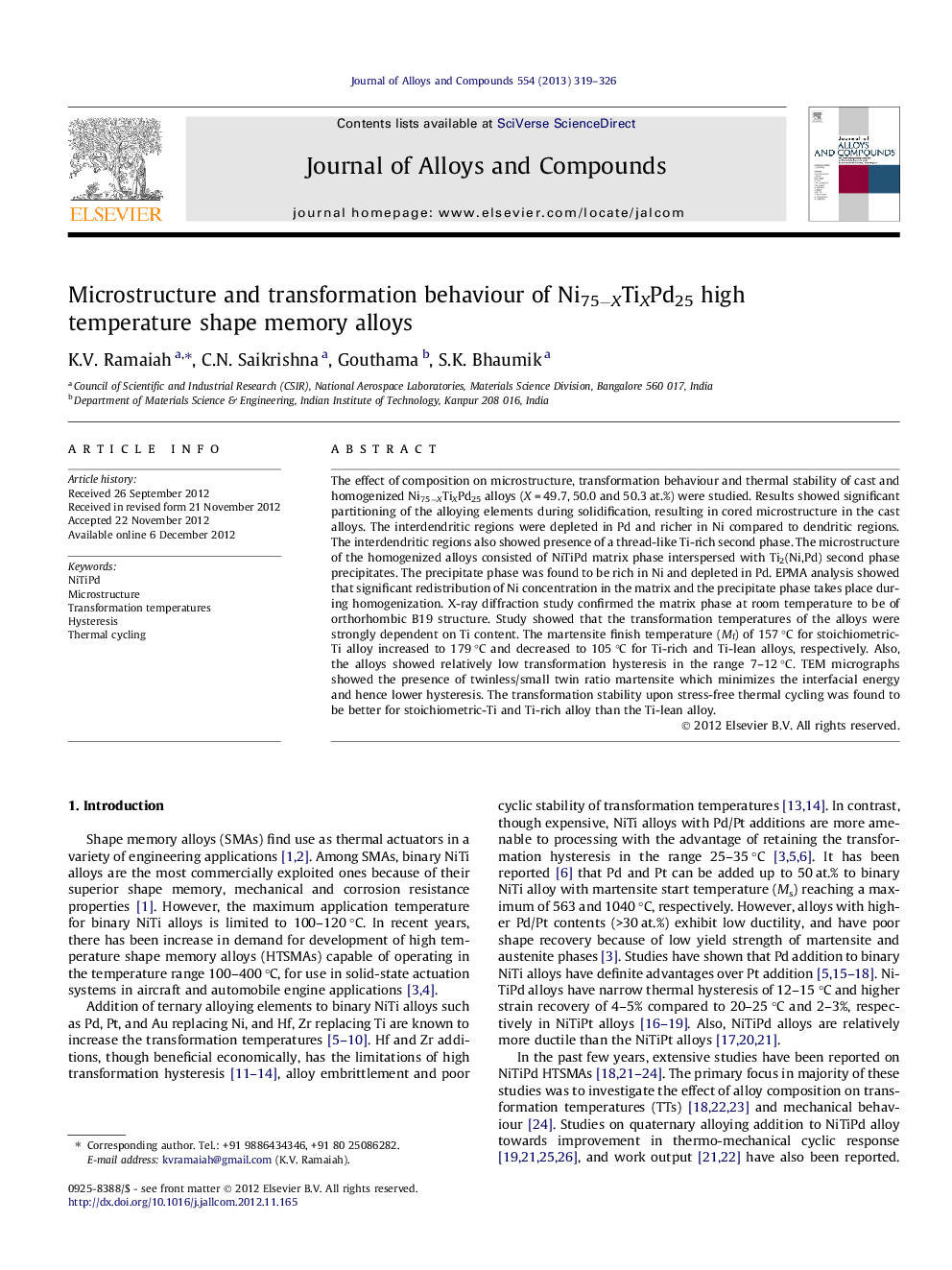| Article ID | Journal | Published Year | Pages | File Type |
|---|---|---|---|---|
| 1614636 | Journal of Alloys and Compounds | 2013 | 8 Pages |
The effect of composition on microstructure, transformation behaviour and thermal stability of cast and homogenized Ni75−XTiXPd25 alloys (X = 49.7, 50.0 and 50.3 at.%) were studied. Results showed significant partitioning of the alloying elements during solidification, resulting in cored microstructure in the cast alloys. The interdendritic regions were depleted in Pd and richer in Ni compared to dendritic regions. The interdendritic regions also showed presence of a thread-like Ti-rich second phase. The microstructure of the homogenized alloys consisted of NiTiPd matrix phase interspersed with Ti2(Ni,Pd) second phase precipitates. The precipitate phase was found to be rich in Ni and depleted in Pd. EPMA analysis showed that significant redistribution of Ni concentration in the matrix and the precipitate phase takes place during homogenization. X-ray diffraction study confirmed the matrix phase at room temperature to be of orthorhombic B19 structure. Study showed that the transformation temperatures of the alloys were strongly dependent on Ti content. The martensite finish temperature (Mf) of 157 °C for stoichiometric-Ti alloy increased to 179 °C and decreased to 105 °C for Ti-rich and Ti-lean alloys, respectively. Also, the alloys showed relatively low transformation hysteresis in the range 7–12 °C. TEM micrographs showed the presence of twinless/small twin ratio martensite which minimizes the interfacial energy and hence lower hysteresis. The transformation stability upon stress-free thermal cycling was found to be better for stoichiometric-Ti and Ti-rich alloy than the Ti-lean alloy.
► Partitioning of elements during solidification of cast NiTiPd results in cored microstructure. ► Homogenized alloys consists of NiTiPd matrix with Ti2(Ni,Pd) precipitates. ► Transformation temperatures of NiTiPd alloy is strongly dependent on Ti content. ► Transformation hysteresis was found to be relatively low, in the range 7–12 °C. ► Lower fraction of second phases and twinless/small twin ratio martensite led to low hysteresis.
